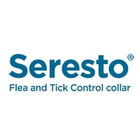
Just like humans, cats can also suffer from allergies. Whether it’s itchy skin, watery eyes, or constant sneezing, allergic reactions in cats can be uncomfortable and sometimes painful. Understanding what causes these allergies, recognizing the symptoms early, and finding the proper treatment can make a significant difference in your cat’s health and overall well-being.
In this guide, we’ll explore the most common causes of cat allergies, how to identify them, and what you can do to help your feline friend feel better.
What Causes Allergic Reactions in Cats?
An allergy occurs when a cat’s immune system reacts strongly to something that’s usually harmless. These substances—called allergens—can come from the environment, food, or parasites. The most common causes of cat allergies include:
Flea Allergies
Even a single flea bite can trigger intense itching and irritation if your cat is allergic to flea saliva. Flea allergy dermatitis (FAD) is one of the most common types of allergies in cats. The affected cat may bite or scratch itself excessively, especially around the tail and back area.
Food Allergies
Some cats are sensitive to certain ingredients in their food, such as beef, chicken, dairy, or grains. Food allergies often result in chronic itching, digestive issues like vomiting or diarrhea, and ear infections.
Environmental Allergies (Atopy)
Just like people, cats can react to pollen, mold, dust mites, or other airborne allergens. These reactions usually cause seasonal symptoms, such as sneezing, watery eyes, or red and itchy skin.
Contact Allergies
Sometimes, the cause is something your cat comes into contact with—such as a new shampoo, cleaning product, or certain fabrics. These allergies are less common but can lead to redness or rashes on exposed skin areas.
Common Symptoms of Cat Allergies
Allergies can appear differently depending on the cause. Here are some signs to watch for:
- Excessive scratching, licking, or chewing of the skin
- Hair loss or bald patches
- Red, inflamed, or scabby skin
- Frequent ear infections or head shaking
- Watery eyes or nasal discharge
- Coughing, sneezing, or wheezing
- Vomiting or diarrhea (for food allergies)
If your cat shows one or more of these symptoms, it’s important to visit your veterinarian for a proper diagnosis.
Diagnosing Allergies in Cats
Since allergy symptoms often look similar to other skin or health issues, your vet will likely recommend a combination of tests to find the real cause. These may include:
- Skin scrapings or cytology to rule out infections or mites
- Flea comb tests to check for flea dirt
- Elimination diet trial to detect food allergies
- Blood or intradermal testing for environmental allergens
Receiving the correct diagnosis enables your veterinarian to develop the most effective treatment plan for your cat.
Treatment Options for Allergic Reactions in Cats
The appropriate treatment varies based on what’s triggering your cat’s allergic reaction. However, the main goal is to reduce symptoms, eliminate triggers, and prevent flare-ups. Here are some effective treatment methods:
Flea Control and Prevention
If fleas are the cause, your vet may recommend monthly preventives like Revolution Plus, Advantage Multi, or Bravecto. Regular use of these treatments helps protect against fleas, ticks, and other parasites throughout the year.
Dietary Management
For food allergies, switching to a limited-ingredient cat food or a hypoallergenic diet may help. Vets often recommend a food trial for 8–12 weeks to identify the offending ingredient. Omega-3 fatty acids, found in fish oil, help maintain healthy skin and naturally reduce inflammation in cats.
Environmental Management
If your cat is allergic to pollen or dust, regular cleaning and the use of air purifiers can help reduce exposure. Wiping your cat’s fur after outdoor activity also helps remove allergens.
Medications
Depending on severity, your vet may prescribe:
- Antihistamines to relieve itching
- Corticosteroids for short-term relief
- Immunotherapy (desensitization shots) to help the immune system tolerate allergens over time
- Topical creams or medicated shampoos for localized irritation
Regular Grooming
Brushing your cat often helps remove dust, pollen, and loose fur. Always use cat-safe grooming products designed for sensitive skin.
Home Care Tips for Cats with Allergies
Alongside vet-prescribed treatments, a few home-care habits can help keep allergies under control:
- Provide your cat with food that’s high in omega-3 fatty acids to promote healthy skin and help minimize inflammation.
- Vacuum and clean regularly to remove dust mites and allergens.
- Wash your cat’s bedding and toys weekly in hot water.
- Avoid using strong-scented detergents, candles, or air fresheners.
- Use vet-approved flea preventatives year-round, especially in warm states.
When to See the Vet
If your cat’s symptoms persist or worsen even after trying home remedies or over-the-counter treatments, it’s time for a veterinary visit. If chronic allergies are not properly treated, they can result in recurring infections and cause ongoing irritation or discomfort for your cat.
Your vet may suggest allergy testing or recommend specific medications to provide lasting relief.
Conclusion
Allergic reactions in cats are common but manageable. With proper diagnosis, treatment, and preventive care, your cat can lead a comfortable, itch-free life. Regular flea prevention, a balanced diet, and a clean home environment are key to keeping allergies under control.
If you suspect your cat has allergies, don’t wait—consult your veterinarian early to ensure timely care and peace of mind.






